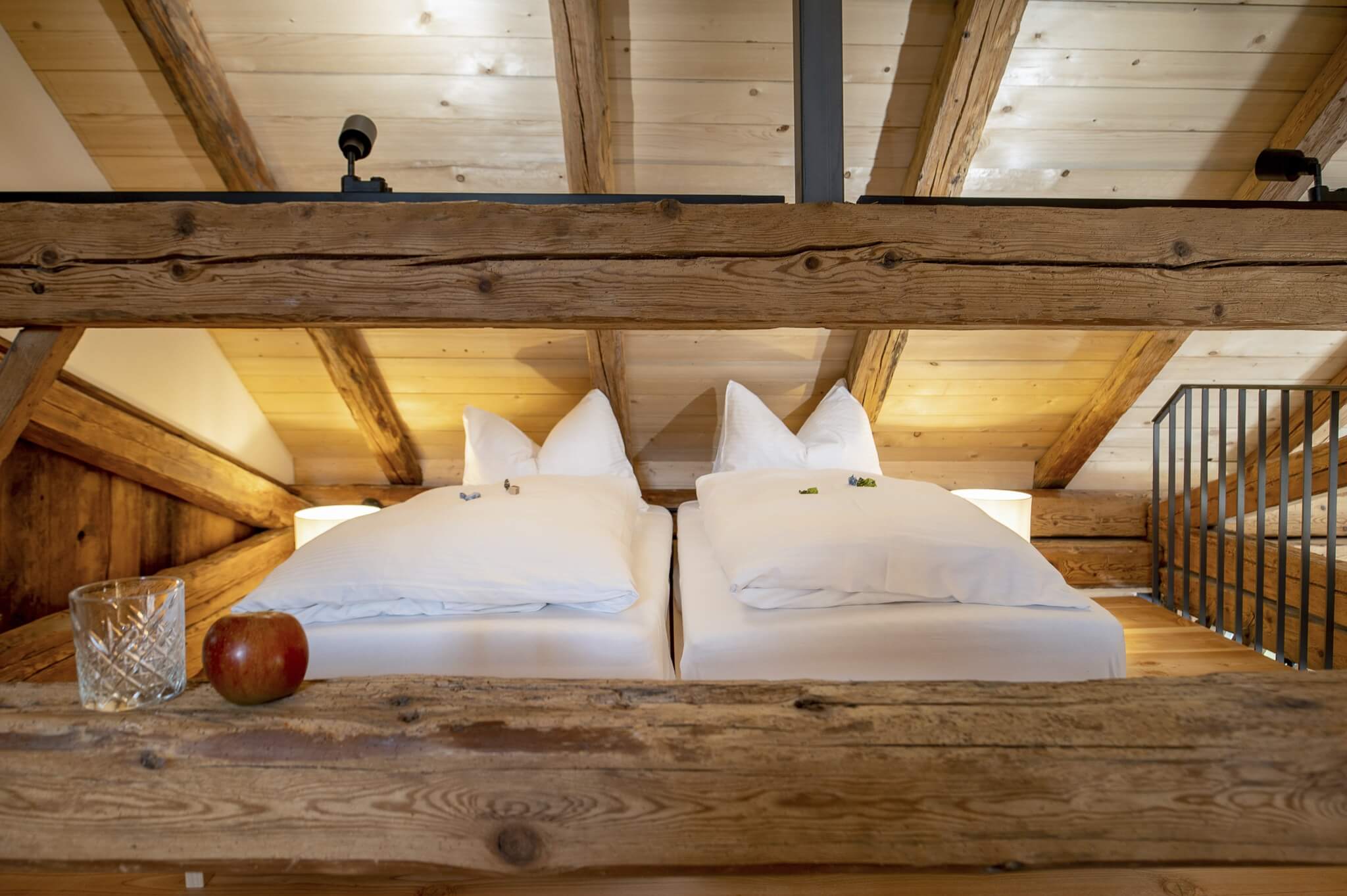
Sustainability
Sustainability Concept
By taking over and using the DIRINGLO, we are conscientiously continuing the work and the will to preserve the farm of the previous owners, acting in their spirit and with foresight for our children and grandchildren. In this way, we become – and we see this as a distinction – participants in an inter-generational contract that has sustained the DIRINGLO for centuries.
The concept of sustainability, originally introduced by the forestry industry, is an integral part of this intergenerational contract. Its importance is best illustrated by the definition of sustainability in the 1987 Brundtland Report, which states: “Sustainable development is development that meets the needs of the present without compromising the ability of future generations to meet their own needs.
The consequences of ignoring sustainability can still be seen today, centuries later, in the Mediterranean region – with the well-known social and climatic consequences. As people become more sensitive and open to nature and the finite nature of resources, an inflationary and superficially sales-promoting use of the term sustainability is increasingly being exposed and rejected.
With the development of the DIRINGLO, we stayed true to the core meaning of sustainability. It is not the purchase or creation of ‘sustainably’ produced things that is sustainable per se, but rather a long service life, ease of repair and a composition of simple materials that are available more or less everywhere and can be returned to the material cycle at any time. Exactly as has long been the tradition in the DIRINGLO.
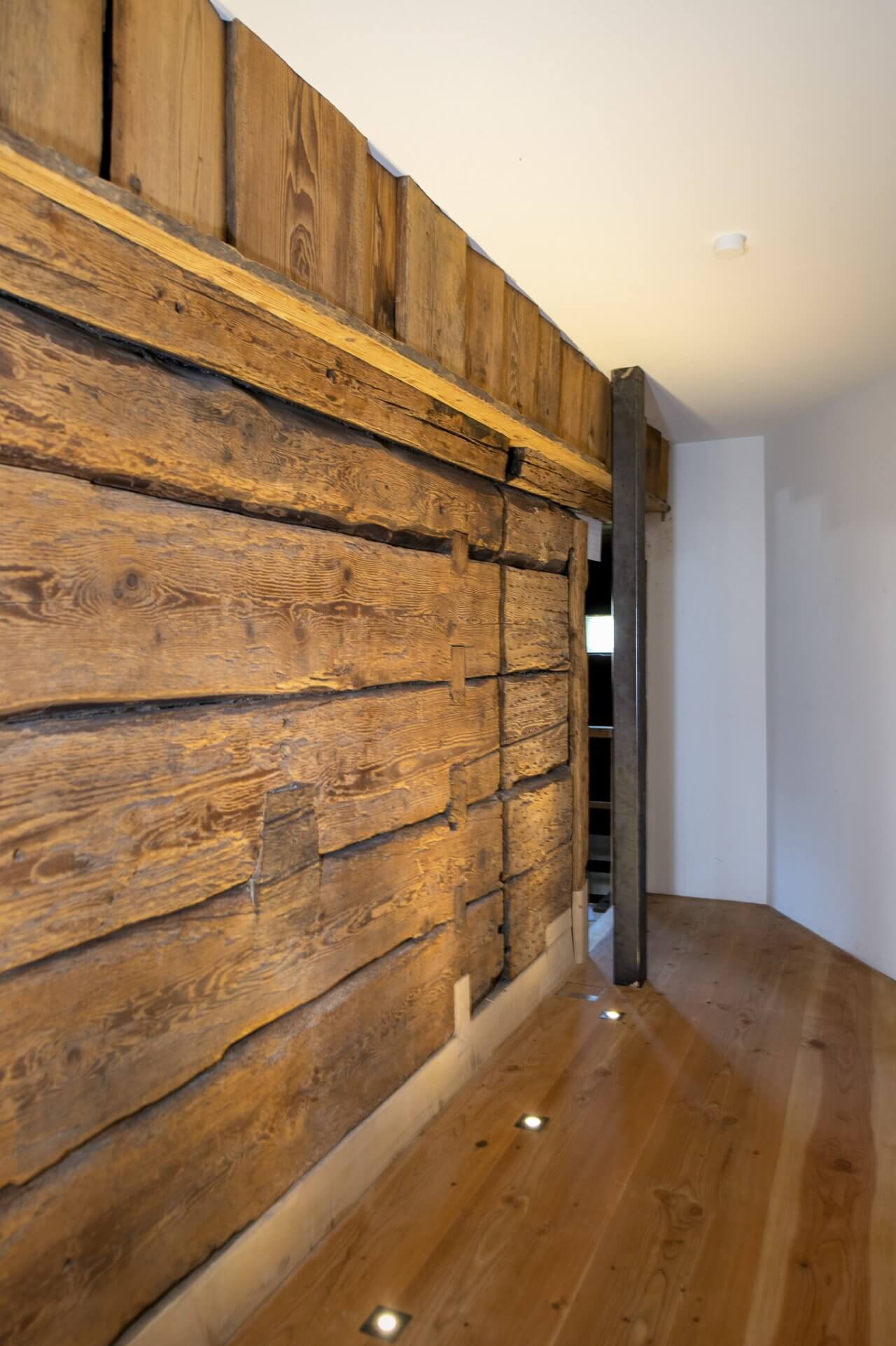
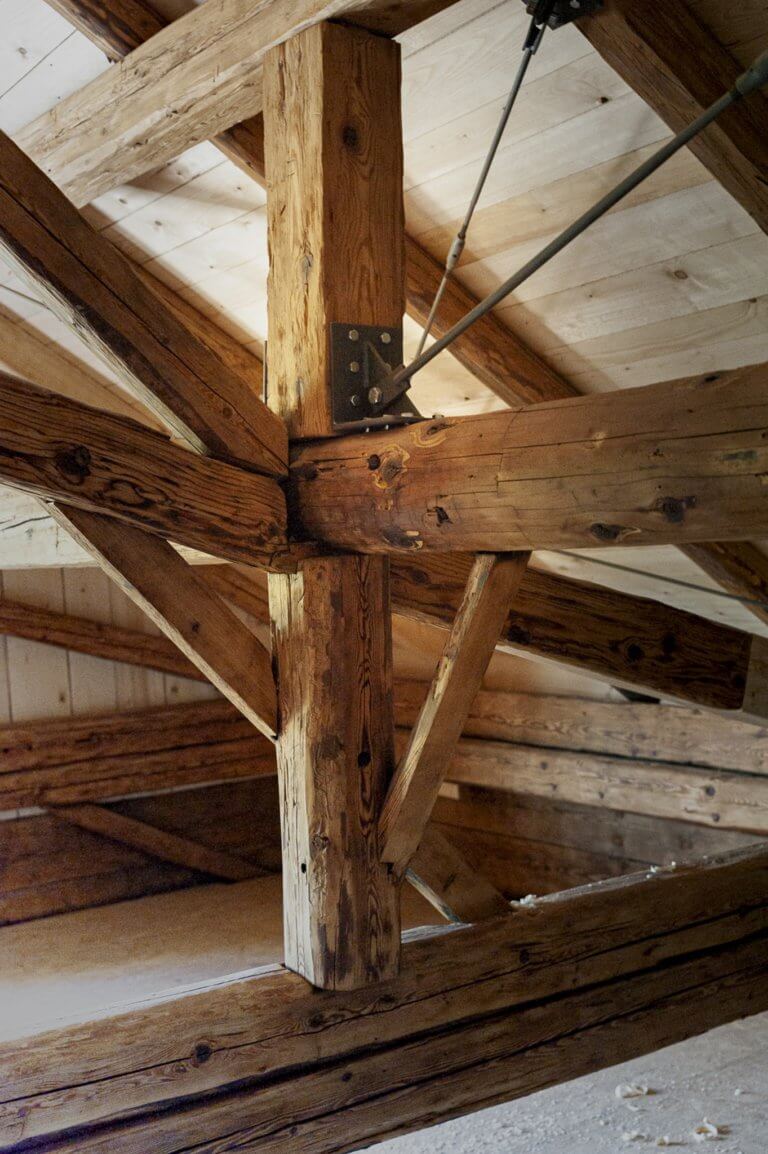
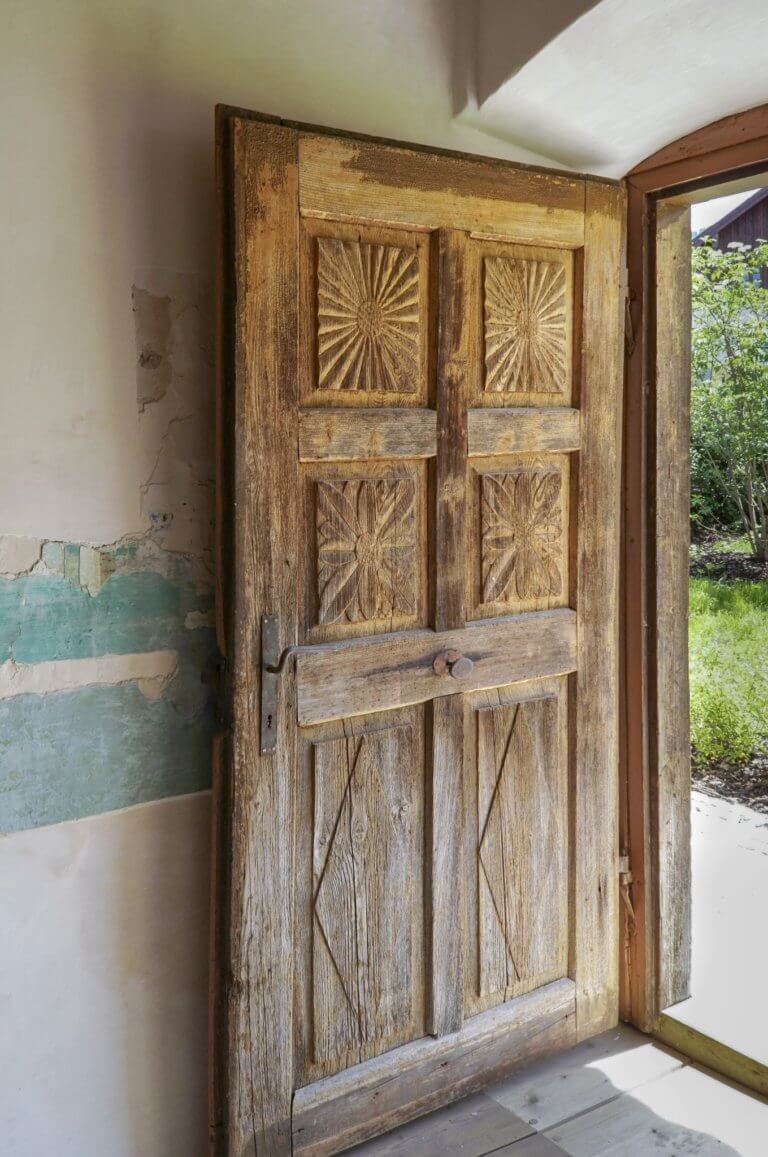
The house
For centuries, rural houses have been an essence of minimalist use of materials (bricks were used only where absolutely necessary), optimising building orientation and minimising window/cooling surfaces, as well as expensive, non-local materials such as glass. Our ancestors always lived this way, mostly out of economic necessity, and we are now struggling to return to it. Energy sources were usually used several times, for heating, cooking, baking and washing, in order to make the best use of resources.
With these ideas in mind, we have carefully repaired, extended and revitalised the historic farmhouse, using as much of the original materials as possible – wood, lime plaster, brick and glass. To meet today’s comfort standards, the roof and facade have been insulated with recyclable wood fibre panels up to 20.0 cm thick and fitted with underfloor heating powered by a heat pump.
The solid Douglas fir planks, 28mm thick and up to 30cm wide, will provide a warm, comfortable floor for many generations to come. The materials and the excellent craftsmen who work them are mostly from the village or the surrounding area, so many unnecessary and long journeys have been avoided.
Even the furniture – such as in the historic parlour, which is heritage-listed – has been professionally restored. Where new designs have become necessary, pieces are made from solid mountain maple by local craftsmen to our designs.
In order to heat the parlour during the transition period, the historic tiled stove was completely dismantled and carefully and artistically restored to its original state by a renowned tile restorer. The stove was then rebuilt with new firebricks and covered with the original tiles.
An open fireplace has been installed in the former stables and in the threshing floor, and wood from the nearby woods can be used to create a cosy atmosphere.
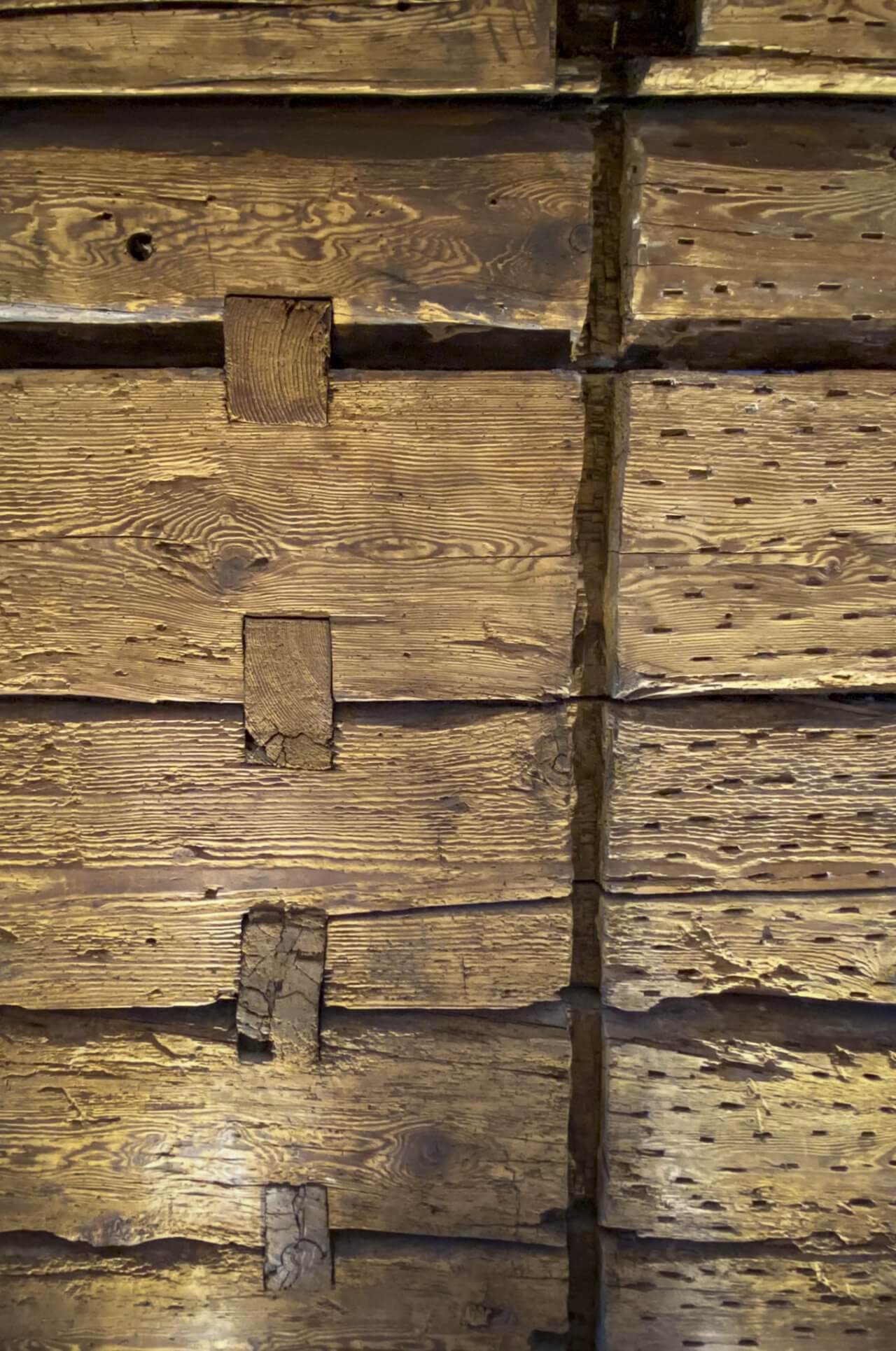
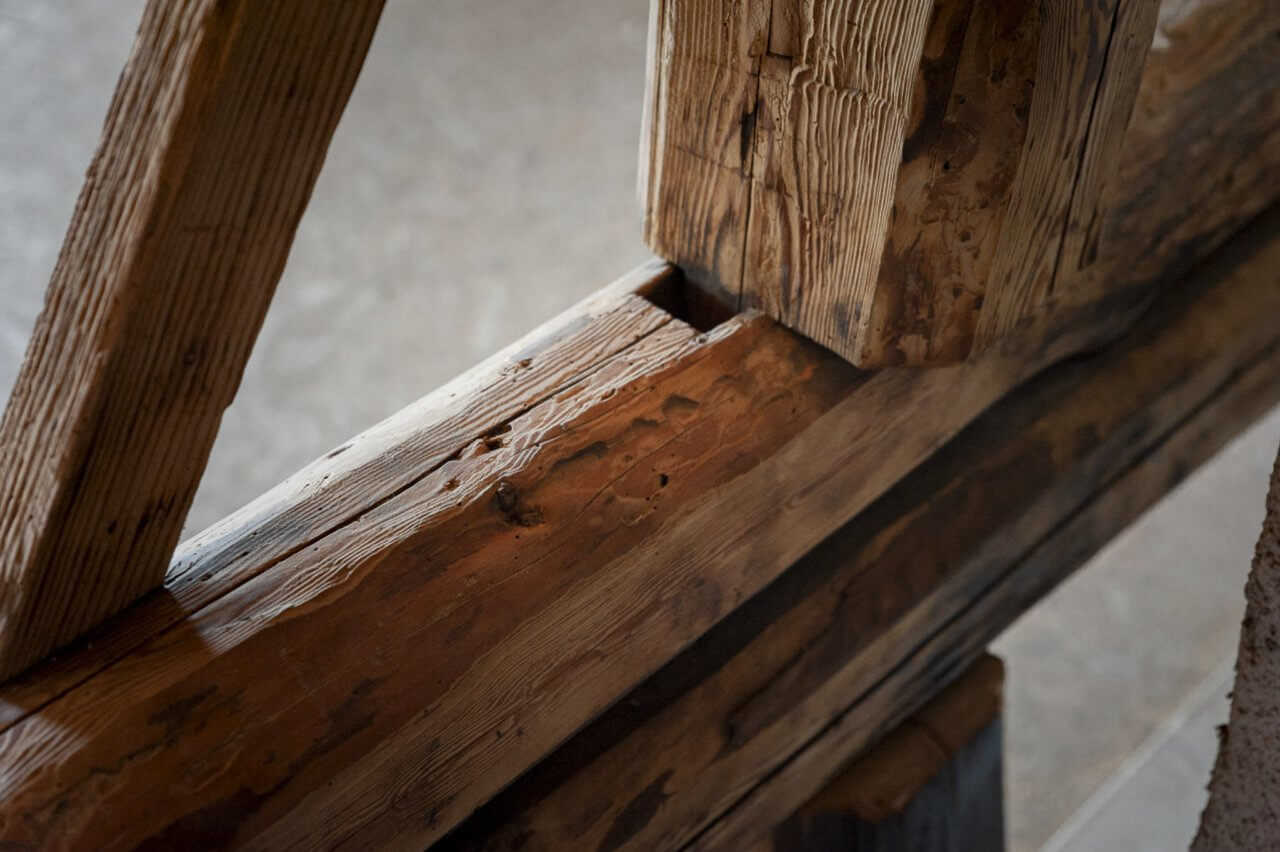
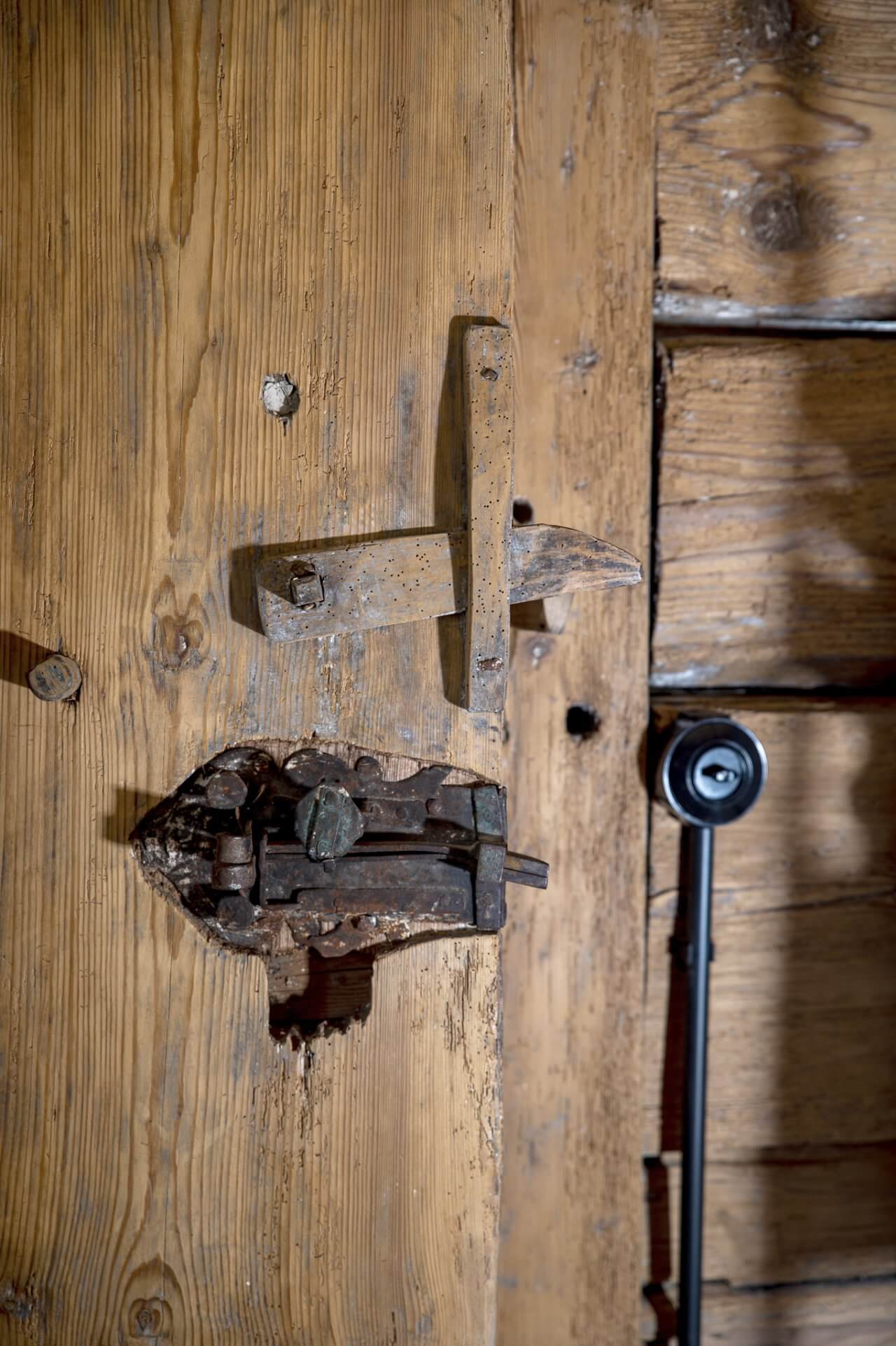
The technology
Whereas wood used to be the main source of heating energy, today it is electricity that drives the heat pump. The terracotta-coloured solar panels on the roof of the garage – almost unique in Germany – produce their own solar energy on site, which is converted by the heat pump into heating energy, which in turn feeds the heating surfaces in the house.
The underfloor heating systems installed in almost all the rooms deliver the heating energy to the rooms as low-temperature radiant heat and save additional energy by storing it in the screed surfaces.
The photovoltaic system also supplies a large part of the energy for the 3 charging stations in the garage (subsidised by the Free State of Bavaria, to be in operation by June at the latest, together with the solar power system installed on the carport) – depending on the time of day. The rest of the electricity is supplied by the local electricity cooperative and is 100% green (hydroelectric). The windgas used to heat the hot water is supplied by Green Planet Energy eG.
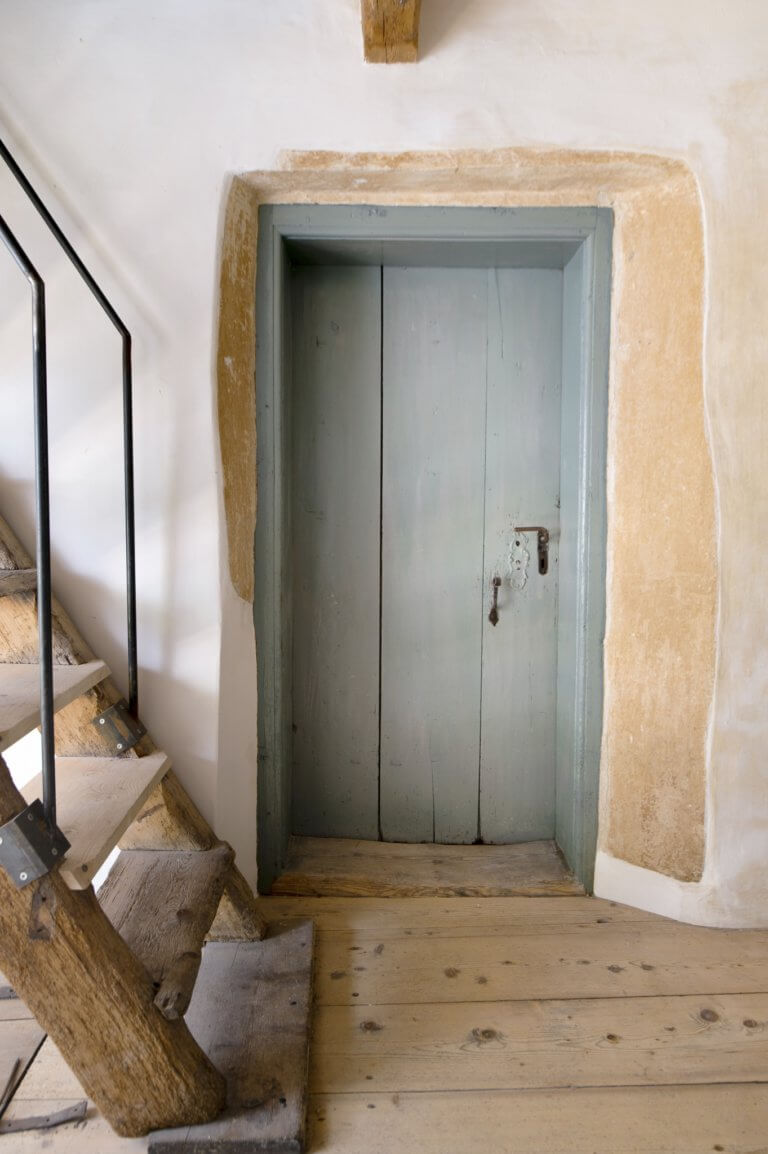
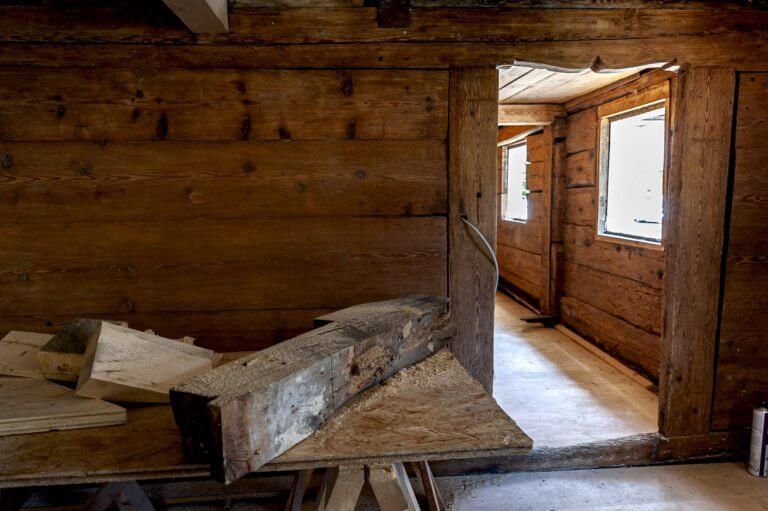
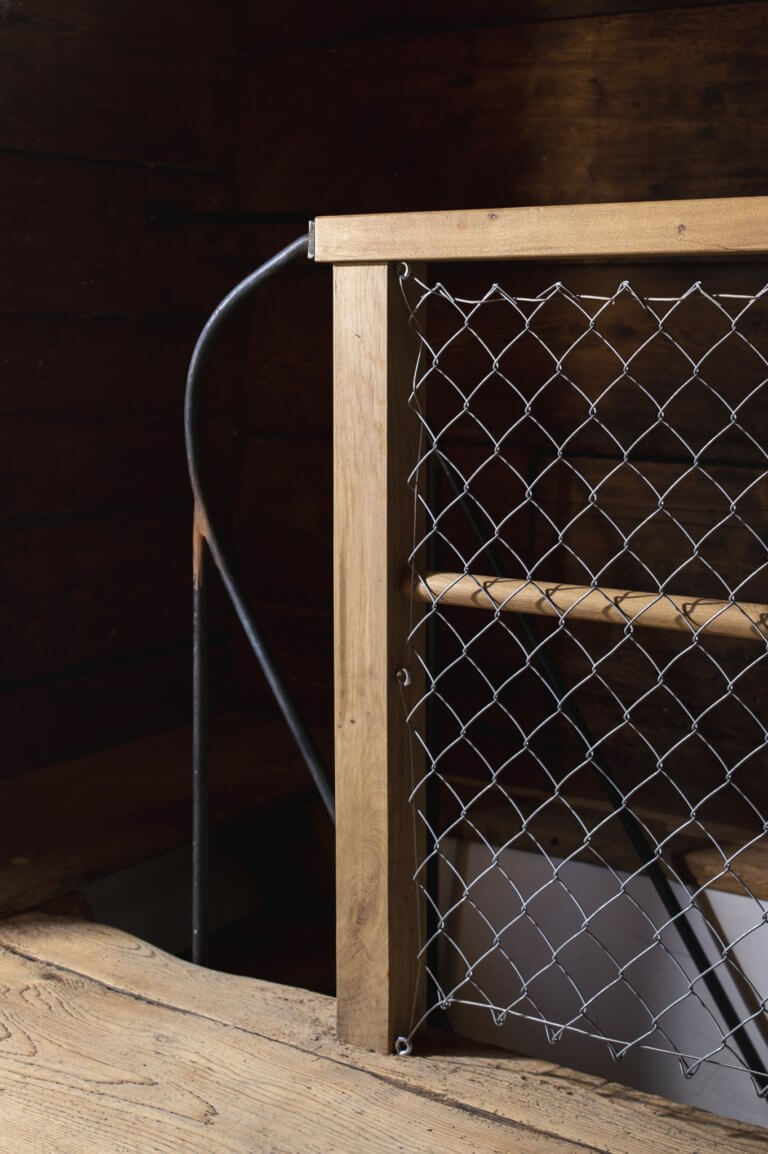
The social factor
Despite being empty for many years, the old farmhouse has always been part of the image of the village and the memory of its inhabitants because of its exposed location.
Thanks to the involvement of many craftsmen from the village and surrounding communities, the restoration and reconstruction process has created an ever stronger bond with the historic building.
Initially, the once dilapidated building was more of a blemish on the village, but as the work has progressed, pride in the work and the new look, as well as a deeper network among the craftsmen, has rightly begun to emerge.
Even with the neighbours – all of whom were already very sympathetic to the project from the beginning – a deeper bond has developed over the result and the visible improvement of the surroundings.